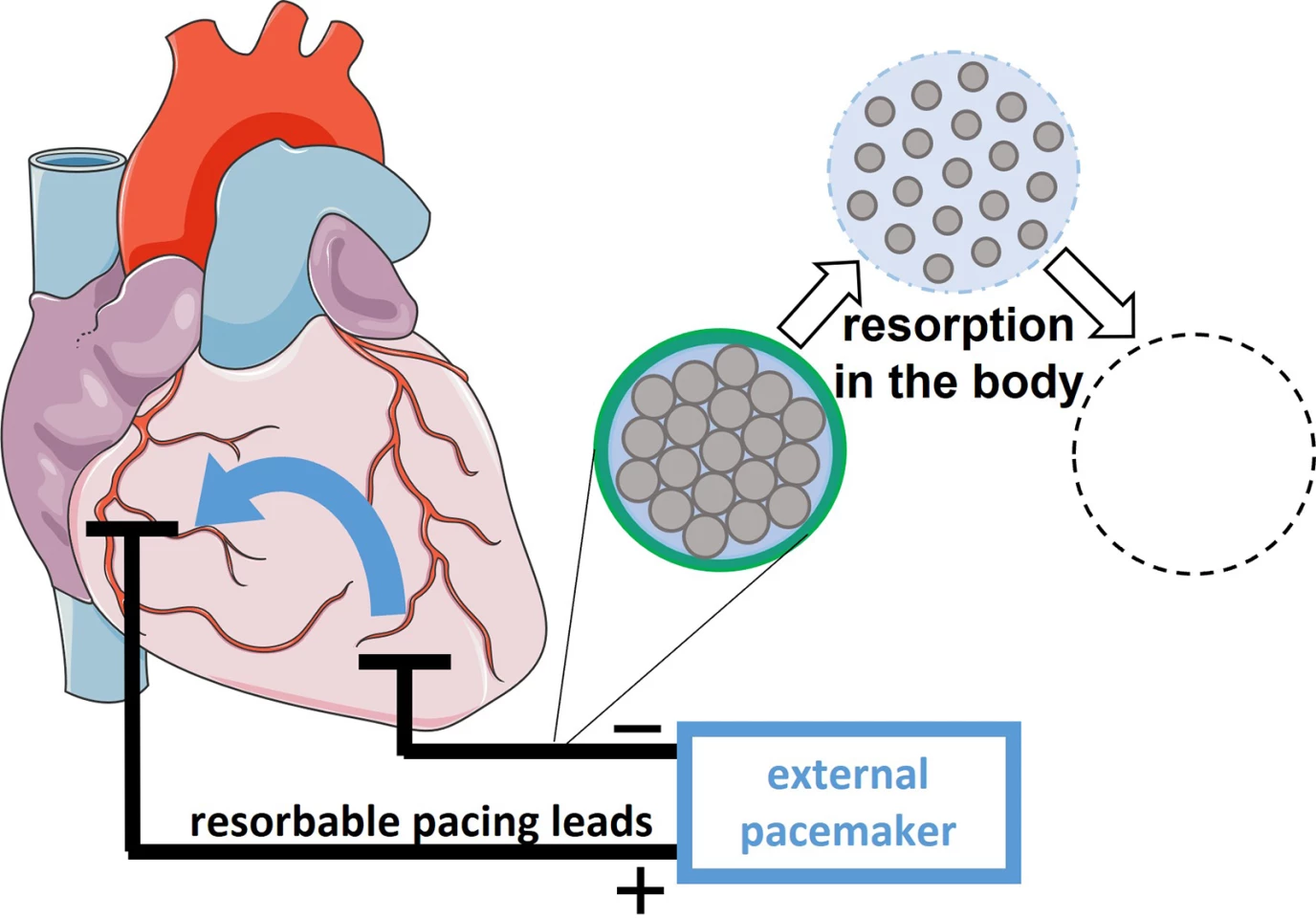The leads that connect external pacemakers to the heart can potentially cause problems, either if they're removed or left in place. German scientists are therefore developing an alternative, in the form of leads that get absorbed by the body.
It's not uncommon for patients to develop an arrhythmia (irregular heartbeat) after undergoing heart surgery. The condition is usually treated via the temporary use of an external pacemaker, which is connected to the heart via electrical leads that were implanted – as a preemptive measure – when the surgery was performed.
Once the pacemaker is no longer required, the leads can either be pulled out of the body or detached from the device and left in place. If they're pulled out, however, there's a chance that they may damage the tissue that has grown in around them. And if they're left in the body, they may cause infections or other complications.
That's where the bioresorbable leads are intended to come in. They're being developed as part of the ReMoTe CarE (Resorbable Molybdenum Temporary Cardiac Electrodes) project, which involves scientists from the Fraunhofer Institute for Manufacturing Technology and Advanced Materials, and the Dresden University of Technology.

As the project name implies, the leads are made of a metal known as molybdenum. Not only does it "degrade uniformly in the body," but it's also biocompatible, very mechanically strong, and highly electrically conductive. Each lead consists of multiple twisted-together molybdenum strands, which are coated in biopolymers. Those polymers provide electrical insulation while the pacemaker is still in use, and will likewise harmlessly degrade afterwards.
Fraunhofer is currently testing and optimizing the mechanical, electrical and degradation properties of the leads. Plans call for preclinical studies to commence later this year.
Source: Fraunhofer





